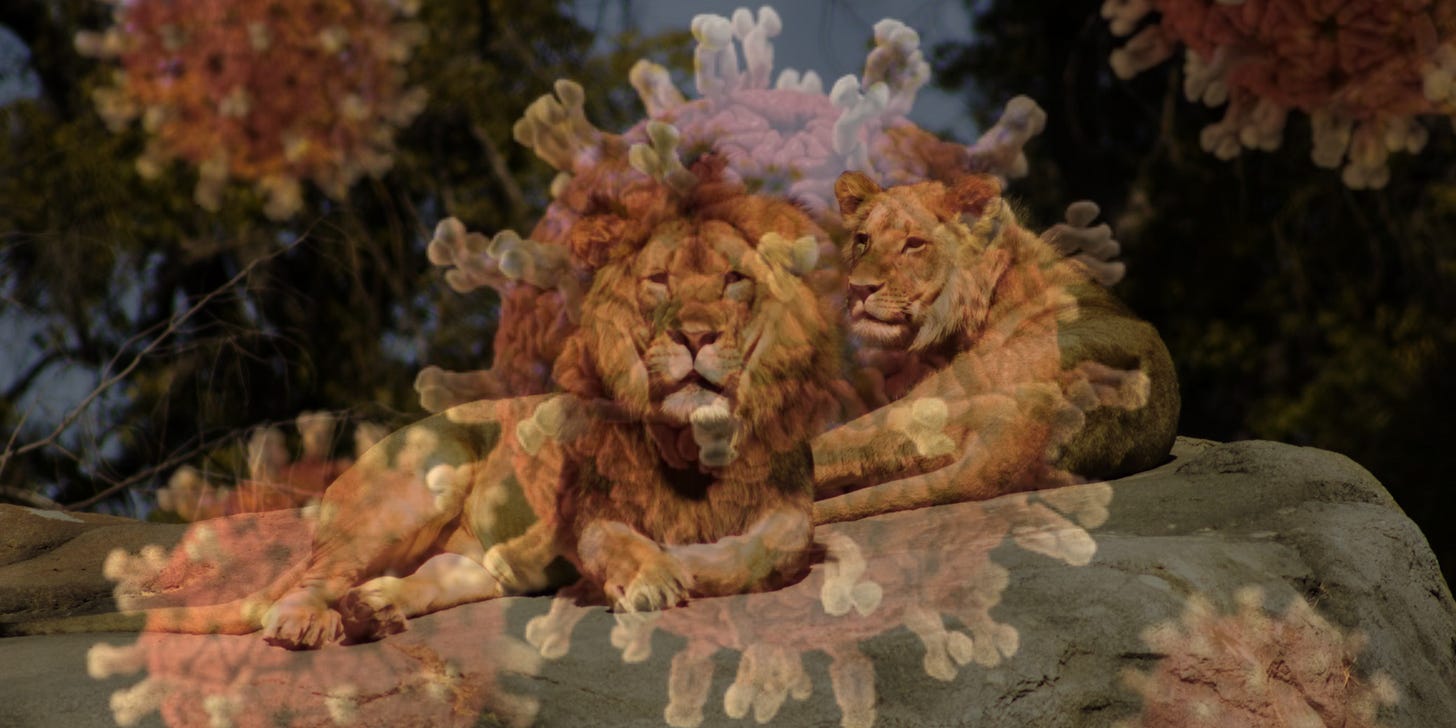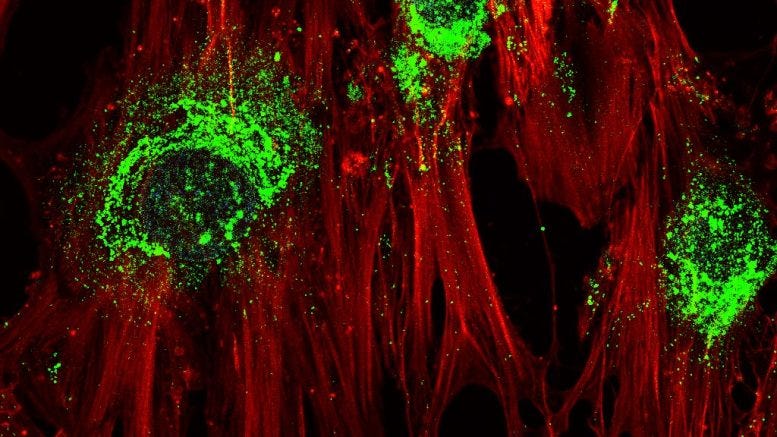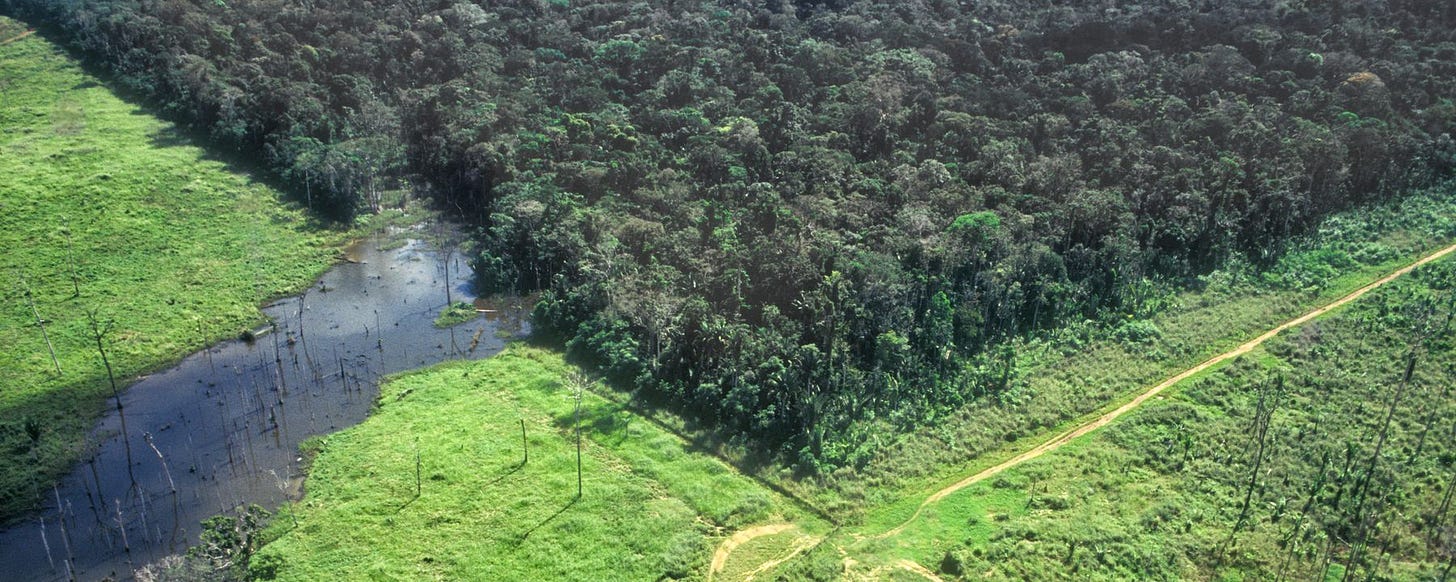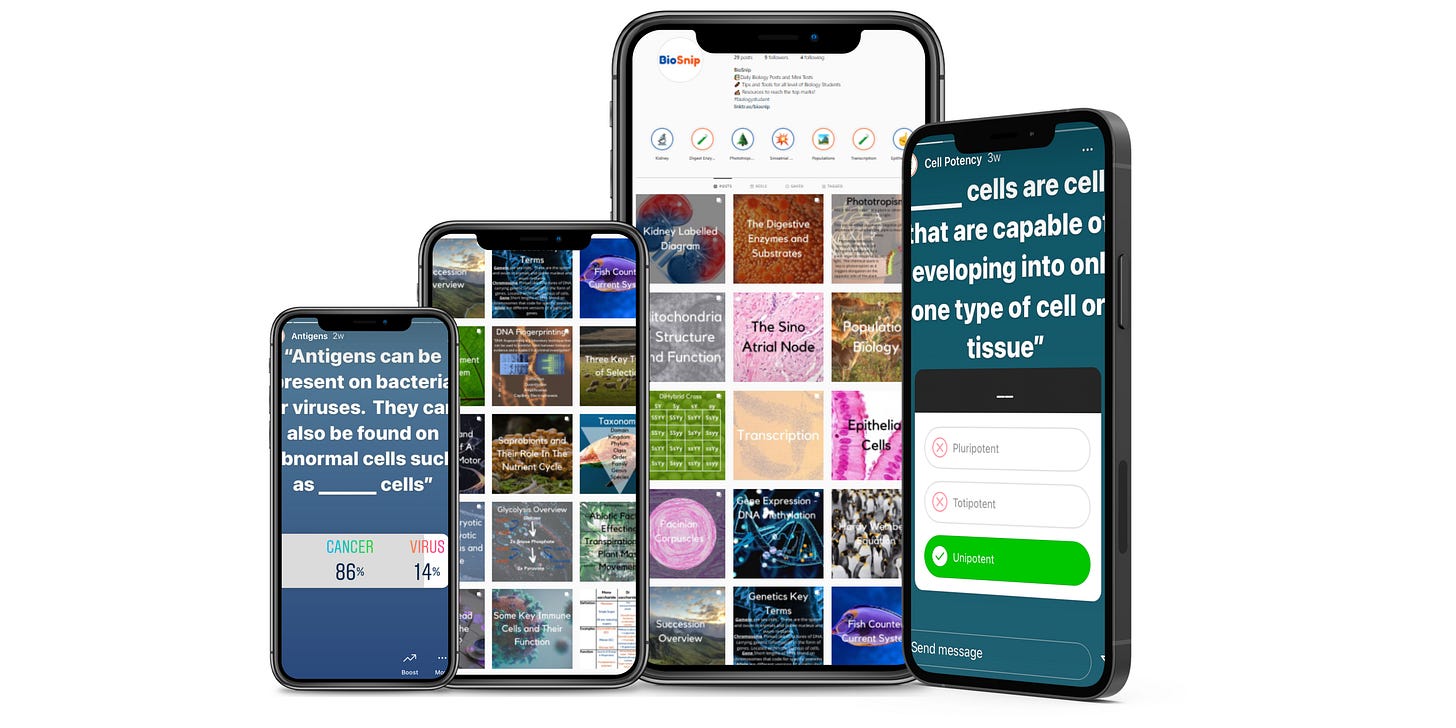#19 Life's Preference for Symmetry, Spillback - People to Animals and Whistling over Petting...
A new discovery into the "why?" of symmetry in nature, disease transmission from people to animals and dolphin communication - blue bottle whistling...
🧩Life Prefers Symmetry?
Life’s preference for symmetry - A new law of nature…

Symmetry is present throughout nature with examples far and few between. Whilst there are clearly examples of asymmetry such as the location of your heart or a crabs one enlarged claw, symmetry occurs to often to be a coincidence. Biologists have never be certain as to the exact reason or purpose of symmetry with no reason for natural selection. Following a recent paper in the Proceedings of the National Academy of Sciences the answer may have been located in computer science.
A research team analysed thousands of molecular structures from protein complexes to RNA as well as gene “on/ off switching” molecules. Essentially the study revealed that evolution tends to select for symmetry due to the fact that the instructions needed to produce symmetry and easier to embed within the genetic code.
Ard Louis, Oxford University physicist said how “People often are quite amazed that evolution can make these incredible structures, and what we’re showing is that it’s actually easier than you might think,”.
The study and exploration into symmetry’s evolutionary origins began when one of Louis’ team Dr Ian Johnston was researching how viruses form their protein shells with many of the structures showing a heavy bias towards symmetry with examples popping up more than probability should allow. Whilst initially surprised the end conclusion made sense; algorithms to produce simple, repeating patters are easier to carry out and harder to screw up. Dr Johnston relates it to tiling a floor. It is far easier to give instructions for repeating rows of identical square tiles than explaining how to make a mosaic. For the next decade the research team looked at protein assembly and RNA folding.
Imagining RNA or proteins as output/ input machines that simply carry out algorithmic instructions explains the tendency towards symmetry in a way that “survival of the fittest” simply can’t.
Whilst significant volumes of work into showing the statistical bias towards microscopic symmetry need to be done, the team is excited by the results of the paper and looking forwards at potential future developments.
🥤Human Spillback
Human disease transmission under certain conditions…
The transmission of viruses between ourselves and animals has come to light over the last couple of years more than ever before, however the spread of a virus or disease from animals to people is not unique. This form of transmission can not only occur both ways, but has occurred at least a 100 times states a new study.
Termed “spillback” the area has gained significant attention due to the spreading of SARS-CoV-2 in farmed mink, lions and deer.
Senior study author Gregory Albery said that "There has understandably been an enormous amount of interest in human-to-wild animal pathogen transmission in light of the pandemic,".
To help bring more information to light, Albery and his team went searching to see how the process works with the aim of identifying past examples. The team found that almost half of “spillback” incidents occurred in captive animal settings such as zoos. A location where tigers and lions received COVID. Over half of the cases found showed that over half of transmission were human to primate. This is to be partially expected as viruses are more likely to spread between closely related species. Dr Anna Fagre stated how "This supports the idea that we're more likely to detect pathogens in the places we spend a lot of time and effort looking, with a disproportionate number of studies focusing on charismatic animals at zoos or in close proximity to humans,".
She went on to say how this issue brings into question which cross species transmission events we may be missing and what this may lead to in both public health but the health and conservation of potentially infected species. A potential solution and area of research for the future is artificial intelligence to anticipate which species may be at risk.
🐬Dolphin Whistling
Dolphin whistling to maintain key social relationships…

A research team at the University of Bristol have found that allied male bottlenose dolphins maintain weaker but vital social relationships through whistle exchanges. These new findings in Current Biology show how they rely on this easier and less time demanding form of communication to stay in contact with weaker allies.
The Bristol based research team along with an international suite of universities used nine years worth of data, both acoustic and behavioural, from Western Australia to asses the valuable alliances in male dolphins. The lead author of the study Emma Chereskin, Bristol School of Biological Sciences, said that "Many animals, including humans, use tactile contact, touch, to strengthen and reaffirm important relationships. But as the number of close social relationships increases, so too do the demands on the time and space available for relationship maintenance through physical contact. Male bottlenose dolphins form strategic, multi-level alliances, and we wanted to know how they maintained multiple alliance relationships in large groups."
The team found that the core alliances for dolphins involved more petting and rubbing - physical and affiliative contact behaviour, than those of the weakly bonded social relationships which relied on solely vocal exchanges. The social bonding hypothesis suggests that with increasingly large group sizes, impossible demands were placed on the time needed for physical contact between all dolphin relationships and so the findings provide new evidence that vocal exchanged can serve a bonding function.
This evidence in support of the social bonding hypothesis outside of the primate lineage hints at exciting information and possibilities at the origins of language across taxa.
Weekly Topics
🏞️ Environmental
Methane leak plagues New Mexico…
Changes in bird nesting habitats - may signal climate change based shift
Sociality predicts orangutan vocal phenotype
🦭Marine
Coral resiliency is encouraging…
Elephant seal’s map sense tells them when to head “home”
Transcriptional plasticity in fish species
🐼 Conservation
Caterpillar range is correlation with their eating habits
Integrate remote sensing with ecology and evolution
World bank sells first rhino bond to help RSA…
🦠 Disease and Illness
Eating disorders have risen with college students through the pandemic
Moderna trains its mRNA tech on the common cold
😷 COVID
Could aspirin cut death risk for hospitalized COVID patients?
Morgue data hint at COVID’s true toll in Africa
New methods for generating binding proteins
🧪 Biochemistry
How mitochondria adapted to living within cells
Design of protein binding proteins from only structure
Cells cooperating within Microbial communities
🔬 Evolution
Experimental RNA molecule follows Darwinian evolution
Oracle for predicting the evolution of gene regulation
Genomic signature of high altitude adaptations
🧬 Genetics
Is there a genetic link between the surface of the brain and the risk of schizophrenia
Switching neurons on and off - probe autism circuits
📷 Weekly Camera Roll
Click on the text below to keep reading…
Reference List
Content may be adapted and edited for style and length.
🧩Life Prefers Symmetry?
Johnston, I., Dingle, K., Greenbury, S., Camargo, C., Doye, J., Ahnert, S. and Louis, A., 2022. Symmetry and simplicity spontaneously emerge from the algorithmic nature of evolution. Proceedings of the National Academy of Sciences, 119(11).
🥤Human Spillback
Anna C. Fagre,Lily E. Cohen,Evan A. Eskew,Max Farrell,Emma Glennon,Maxwell B. Joseph,Hannah K. Frank,Sadie J. Ryan,Colin J Carlson,Gregory F. Albery. Assessing the risk of human-to-wildlife pathogen transmission for conservation and public health. Ecology Letters.
🐬Dolphin Whistling
Chereskin, E., Connor, R., Friedman, W., Jensen, F., Allen, S., Sørensen, P., Krützen, M. and King, S., 2022. Allied male dolphins use vocal exchanges to “bond at a distance”. Current Biology,.





